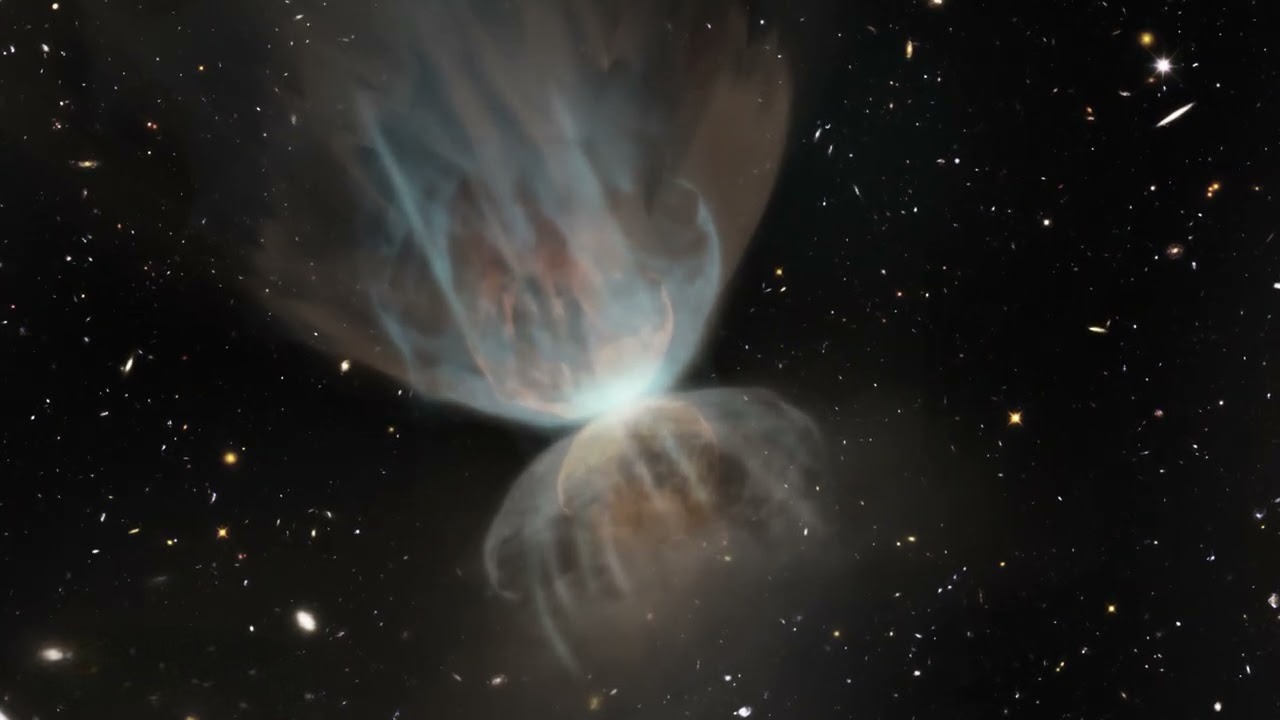In the Orion constellation, a group of stars known as FU Orionis has long puzzled astronomers. This double star system grabbed attention back in 1936 when its central star suddenly became 1,000 times brighter than usual. This behavior, typically seen in dying stars, was unprecedented in such a young star.
This unusual phenomenon led to the classification of similar stars as FUor stars. These stars exhibit sudden flares of brightness before returning to their normal state years later.
Now, thanks to observations using the Atacama Large Millimeter/submillimeter Array (ALMA), astronomers have made groundbreaking discoveries about FU Orionis. Antonio Hales, lead author of the research published in the Astrophysical Journal, explains, “FU Ori has been consuming material for nearly a century to sustain its eruption. We finally have insight into how these young, eruptive stars replenish their mass.”
ALMA observations unveiled a stream of carbon monoxide cascading onto FU Orionis, suggesting a mechanism for the ongoing outburst. This accretion streamer is believed to be residual from a previous, larger gas feature that fell into the stellar system, potentially destabilizing it and triggering the brightness surge.
By employing various ALMA antenna configurations and innovative numerical methods, astronomers were able to model the mass flow and confirm its properties. Aashish Gupta, co-author of the study, remarks, “The comparison of observed and expected structures provided compelling evidence for the accretion streamer.”
Sebastián Pérez, another co-author, emphasizes ALMA’s ability to provide insights across different scales of stellar and planetary formation. The observations also revealed a slow-moving outflow of carbon monoxide from FU Orionis, similar to outflows observed around other protostellar objects.
Understanding the formation of FUor stars sheds light on the broader processes of star and planet formation. These outburst events impact the chemical composition of accretion discs, influencing the eventual formation of planets.
Having studied FU Orionis since ALMA’s inception in 2012, Antonio Hales expresses excitement about finally unraveling its mysteries. The findings not only deepen our understanding of stellar phenomena but also contribute to our knowledge of cosmic evolution.















































